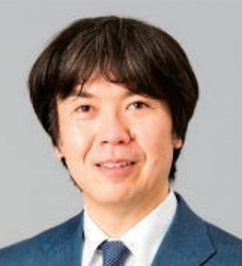

Research and education in the Systems Science Course deals with a new and unified approach to varied technological problems from the standpoint of systems science. In particular, the approach requires the study of complex systems in the light of self-regulation, self-organization, and self-production. This is closely related to the need for study of the rapid growth in intelligent systems, and also in global systems such as world-wide computer networks. Emphasis is also placed upon the understanding of complicated mutual interactions, hierarchical systems, distributed or parallel self-determination, human-machine interfaces, biomedical engineering, and medical information systems.
The Course supplies a variety of programs for solving pertinent system problems: the analysis, design, control of systems, decision making and simulation algorithms and techniques, as well as their bases in applied mathematics, application software, and hardware. The Course has three regular divisions and one cooperative division. Each division consists of a few chairs. Thirty graduate students are admitted into the Master's program, and 13 into the Doctoral program.

Capturing the Essence of “Motion” for Broad Application
OHTSUKA Toshiyuki, Systems Science Course
Systems science is an academic approach that attempts to understand the world by abstracting all objects and viewing them as “systems.” I specialize in dynamical systems theory and control engineering, which use mathematical expressions to shed light on general properties of “motion” and formulate principles for realizing desirable “motion.” Different kinds of “motion” within events occurring around us, such as mechanical motion and natural phenomena, may have underlying commonality, no matter how unrelated to each other they may seem. Hence, dynamical systems theory and theories and algorithms of control engineering may be universally applicable in various fields, including vehicles, robots, aircraft, environment and energy, and society and economics. Students and researchers of such an academic discipline not only learn things that are practical in the real world but also enjoy the satisfaction of identifying essences without being misled by superficial differences among individual objects. I believe that there is beauty in the concept and methodology of systems science because it deals with the essential qualities of things. If you have an interest in principles common to various events that take place around us and wish to acquir knowled of systems science while cultivating the capability to penetrate to what is essential, then the Systems Science Course is the place for you!

Learning “How” to Address Unknown Issues
SHIMODAIRA Hidetoshi, Systems Science Course
In the Systems Science Course, we are working on scientific research across a variety of fields. For instance, we use sensors to measure information from biological and mechanical systems in order to infer their internal states, project their future behavior, and control them. Also, by elucidating how the brain’s neural circuits process information, we are working to create a system that is capable of not only learning and making inferences but also adjusting itself to an uncertain and changing environment. Furthermore, we are studying algorithms and theory for making inferences and discoveries from the vast amount of image and document data available online and elsewhere, together with the high-performance parallel computing that makes such systems possible.
Not only are these research fields related to systems but, in many cases, research projects conducted in these fields share a common approach - researchers conduct their studies through mathematical models, constantly aware of the flow of information. Using mathematical models, researchers can treat different objects as if they were the same, thereby gaining broad perspectives. For example, by using a “graph” that consists of vertexes and edges, researchers can express not only networks (neural networks, website link structures, railway systems, etc.) but also structures of relevant data, such as tagged images on social media. Because the objects thus modeled can be treated mathematically, scientists can advance their research even further. In the field of machine learning, significant research is being carried out into a technique called graph embedding for efficient information search. One drawback of this technique was that a graph with a hierarchical structure is not expressed very well in Euclidean space. This problem has been solved by a mathematical idea of using a curved space called “hyperbolic space.”
Another characteristic of students/researchers in the Systems Science Course is strongly conscious of systems in the real world, in addition to conducting mathematical study at an abstract level. Issues in the real world can be often solved with established methods, but very new methods occasionally arise out of addressing the challenges posed by difficulties. In the study of methodology of statistics, for instance, we are constantly exploring new ways to make inferences and predictions from data. What is important for such a situation is again knowledge in mathematical fields such as probability theory and optimization.
Thus, mathematical foundations and applications interact with each other in the Systems Science Course. Students are invited to learn an aspect of this scientific discipline, broaden their perspectives, and acquire universal approaches and attitudes; that is, “how” to address unknown issues, through research activities and lectures at the Graduate School of Informatics. We would be delighted if their experience here motivates them to address unknown issues and find clues to developing new techniques or academic disciplines.